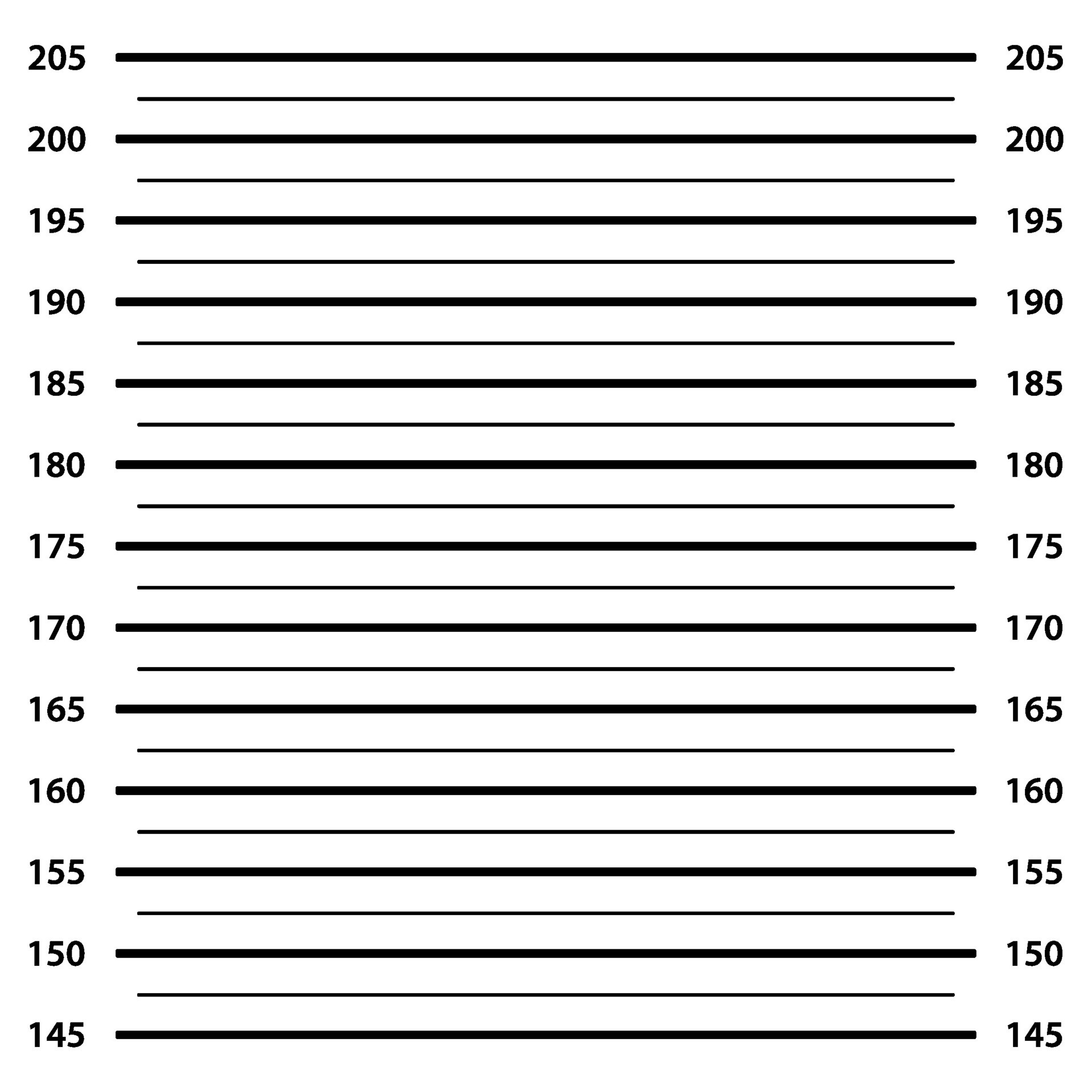Mugshot Matcher: Unlocking The Secrets Of Facial Recognition In Law Enforcement
So here we are, diving into a topic that's as intriguing as it is controversial. Mugshot matcher technology has taken center stage in the world of law enforcement, and it's not just about matching faces anymore. This tech is revolutionizing how authorities identify individuals, track down suspects, and even solve cold cases. But hey, before we get too far ahead of ourselves, let's take a moment to understand what mugshot matcher really means and why it's become such a hot topic in today's digital age.
You might be thinking, "What's the big deal about mugshot matcher?" Well, it's not just another piece of software. It's a powerful tool that combines facial recognition algorithms with vast databases of mugshots to identify people in real-time. Imagine walking into a room, and within seconds, a system can match your face to a mugshot in a police database. Sounds like something out of a sci-fi movie, right? But it's happening right now, and it's changing the game for law enforcement agencies around the world.
Now, let's not forget that with great power comes great responsibility. While mugshot matcher technology has the potential to make our streets safer, it also raises serious questions about privacy, bias, and civil liberties. So as we dive deeper into this topic, we'll explore the pros, the cons, and everything in between. Let's get started!
Read also:Dlila The Rising Star Shining Brighter Than Ever
What Exactly is Mugshot Matcher?
Alright, let's break it down. A mugshot matcher is essentially a facial recognition system designed specifically for law enforcement purposes. It works by comparing images of individuals against a database of mugshots collected by police departments. The system uses advanced algorithms to analyze facial features, such as the distance between eyes, nose shape, and jawline, to create a unique "faceprint" for each individual. This faceprint is then compared to existing mugshots in the database to find a match.
How Does Mugshot Matcher Work?
Here's the nitty-gritty of how mugshot matcher operates. First, the system captures an image of a person, either through a live camera feed or a photo. Then, it processes the image to extract key facial features and creates a digital template. This template is compared to thousands, sometimes millions, of mugshots stored in law enforcement databases. If a match is found, the system provides details about the individual, including their name, address, and criminal history. Pretty cool, huh?
The Evolution of Mugshot Matcher Technology
Facial recognition technology has come a long way since its inception. Initially, it was used primarily for military and intelligence purposes. But as the technology improved, it found its way into law enforcement. The first mugshot matcher systems were basic and often inaccurate, but advancements in AI and machine learning have transformed them into highly sophisticated tools. Today, mugshot matcher technology is faster, more accurate, and capable of processing vast amounts of data in real-time.
Key Milestones in Mugshot Matcher Development
- 1960s: Early experiments with facial recognition began.
- 1990s: First commercial facial recognition systems were developed.
- 2000s: Law enforcement agencies started adopting mugshot matcher technology.
- 2010s: Advances in AI and machine learning significantly improved accuracy and speed.
Benefits of Mugshot Matcher in Law Enforcement
There's no denying that mugshot matcher technology offers numerous advantages to law enforcement agencies. For starters, it helps officers quickly identify suspects and verify identities during arrests. It also aids in solving cold cases by matching new evidence to existing mugshots. Additionally, mugshot matcher can enhance public safety by identifying individuals on watchlists or with outstanding warrants. These benefits make it an invaluable tool for modern policing.
Real-World Applications of Mugshot Matcher
Let's look at some real-world examples of how mugshot matcher is being used:
- Identifying suspects in surveillance footage.
- Verifying identities at border crossings and airports.
- Tracking down missing persons by matching their images to mugshots.
- Assisting in large-scale events like concerts or sports games for crowd monitoring.
The Controversy Surrounding Mugshot Matcher
While mugshot matcher technology has its benefits, it's not without its controversies. One of the biggest concerns is privacy. Many people feel uncomfortable knowing that their faces can be scanned and matched to a mugshot without their consent. There's also the issue of bias. Studies have shown that facial recognition systems can be less accurate when identifying people of color, women, and other marginalized groups. This raises questions about fairness and potential misuse of the technology.
Read also:Murphy North Carolina Newspaper Your Ultimate Guide To Local News And Beyond
Addressing Privacy and Bias Concerns
Law enforcement agencies and tech companies are working to address these concerns. Efforts include:
- Implementing stricter regulations on the use of mugshot matcher technology.
- Developing algorithms that reduce bias and improve accuracy.
- Providing transparency about how data is collected, stored, and used.
Legal and Ethical Considerations
As with any powerful technology, mugshot matcher raises important legal and ethical questions. Is it legal for law enforcement to use facial recognition without a warrant? What happens if the system makes a mistake and falsely identifies someone? These are just a few of the issues that need to be addressed as mugshot matcher technology becomes more widespread. Legal experts and policymakers are currently debating these questions to ensure that the use of mugshot matcher aligns with constitutional rights and ethical standards.
Current Laws and Regulations
Here's a quick overview of the current legal landscape:
- Some states have enacted laws limiting the use of facial recognition by law enforcement.
- Federal regulations are still in the works, with ongoing discussions in Congress.
- Civil rights organizations are pushing for stronger safeguards to protect individual privacy.
Future Trends in Mugshot Matcher Technology
Looking ahead, the future of mugshot matcher technology is both exciting and uncertain. Advances in AI and machine learning will likely lead to even more accurate and efficient systems. However, as the technology evolves, so too will the challenges it presents. It's crucial that developers, law enforcement agencies, and policymakers work together to ensure that mugshot matcher is used responsibly and ethically.
Predictions for the Next Decade
Here's what we might see in the next ten years:
- Increased integration of mugshot matcher with other law enforcement tools.
- Improved accuracy and reduced bias in facial recognition algorithms.
- Stricter regulations and greater public awareness about the use of mugshot matcher.
How Mugshot Matcher Impacts Everyday People
Even if you're not a criminal, mugshot matcher can still impact your life. Whether it's through enhanced security at public events or increased scrutiny at border crossings, the technology is becoming more prevalent in everyday situations. Understanding how mugshot matcher works and the implications it has on privacy and civil liberties is essential for anyone living in the digital age.
Tips for Protecting Your Privacy
Here are a few tips to help you protect your privacy in a world where mugshot matcher is increasingly common:
- Be mindful of where and when you're being filmed.
- Advocate for stronger privacy laws and regulations.
- Stay informed about advancements in facial recognition technology.
Conclusion: The Balancing Act of Mugshot Matcher
So there you have it, folks. Mugshot matcher technology is a powerful tool with the potential to revolutionize law enforcement. But like any powerful tool, it must be used wisely and responsibly. As we've explored in this article, mugshot matcher offers numerous benefits, from identifying suspects to solving cold cases. However, it also raises important questions about privacy, bias, and civil liberties.
As we move forward, it's crucial that we strike a balance between security and individual rights. Law enforcement agencies, tech companies, and policymakers must work together to ensure that mugshot matcher is used in a way that respects privacy and promotes fairness. And as everyday citizens, it's up to us to stay informed and engaged in the ongoing debate about the future of facial recognition technology.
So what do you think? Is mugshot matcher a game-changer for law enforcement, or does it pose too many risks to privacy and civil liberties? Let us know in the comments below, and don't forget to share this article with your friends and family. Together, we can help shape the future of mugshot matcher technology!
Table of Contents
- What Exactly is Mugshot Matcher?
- How Does Mugshot Matcher Work?
- The Evolution of Mugshot Matcher Technology
- Key Milestones in Mugshot Matcher Development
- Benefits of Mugshot Matcher in Law Enforcement
- Real-World Applications of Mugshot Matcher
- The Controversy Surrounding Mugshot Matcher
- Addressing Privacy and Bias Concerns
- Legal and Ethical Considerations
- Current Laws and Regulations
- Future Trends in Mugshot Matcher Technology
- Predictions for the Next Decade
- How Mugshot Matcher Impacts Everyday People
- Tips for Protecting Your Privacy
- Conclusion: The Balancing Act of Mugshot Matcher


